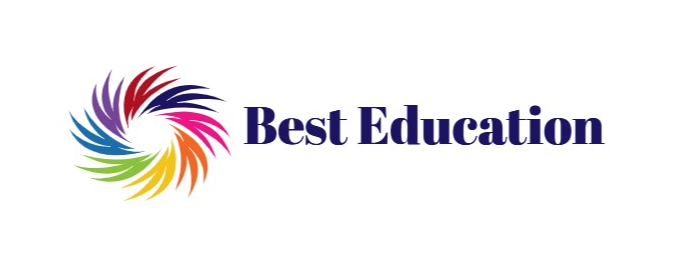Test results have been frustratingly stagnant for the majority of California’s K–12 student groupings ever since the outbreak. However, stagnating scores have been especially annoying for Black students: For the majority of grade levels last year, black children’ math and English language arts test results were declining, with some of the lowest scores of any student group.
But that trend has been reversed in at least one district. Black children, who make up 45% of the student body in Emery Unified, a small district nestled between Berkeley and Oakland in the East Bay Area, have demonstrated remarkable progress since 2022. This is one of the highest percentages of any state.
English language arts scores significantly outperformed pre-pandemic marks, while maths scores almost doubled over the previous year. Compared to the state average, chronic absenteeism decreased by 8.4 percentage points.
While Emery Unified’s scores remain well below average, they are on the rise in contrast to the state’s stagnant or declining results. Black kids’ percentage of children reaching or surpassing the state’s English language arts standards increased by more than 12 percentage points to 37% last year, while their percentage in math increased from 9% to 15%. Emery’s Black children did far better than their colleagues across the state in math and English, and they nearly reached the state average in math.
According to UCLA education professor Tyrone Howard, “the turnaround is worth celebrating, even though the scores are relatively low.”
“I wonder how we can duplicate these oases of hope and glimpses of possibility.” stated Howard. “I have Emery Unified on my radar.
According to Howard, black students have historically lagged behind other groups academically because they frequently attend schools with less qualified teachers and are more likely to be homeless, in foster care, or poor—all of which can make it difficult for a student to concentrate in class.
According to Howard, racism also has an impact.
According to Howard, “Black students’ low expectations and lack of resources play just as much of a factor as anything else.”
Advocates claimed for years that many Black pupils in California were not receiving the additional resources they required due to the state’s school finance system. The state provides districts with additional funding under the Local Control Funding Formula based on many factors, including the percentage of impoverished children, rather than on the racial or ethnic makeup of the kids or the needs of individual schools.
In order to tackle this issue, Governor Gavin Newsom included a clause in the equity multiplier formula last year that gives districts additional funding in response to high rates of low-income children at particular school sites and student turnover. An advocacy group for education, Catalyst California, claims that the modification increases the proportion of Black pupils who receive more funds.
Research indicates that Black teachers are also very important to Black students’ performance. Hiring Black teachers has always been a priority for Emery Unified, surpassing the state average by a wide margin. Compared to just 3.9% of teachers statewide, more nearly 30% of Emery Unified’s instructors are Black.
In comparison to their Black counterparts who didn’t have a Black teacher, Black children who had at least one Black teacher in the early grades were 13% more likely to graduate and 19% more likely to attend college, per a 2018 National Bureau of Economic Research research. According to studies, Black teachers also tend to hold Black students to higher standards and are less likely to see them as unruly or inattentive.
How test scores were raised by Emery Unified
Long before the epidemic struck, efforts were made to improve the situation at Emery High. In order to extensively examine student performance data and curriculum and provide challenging children with extra attention, Goode and her staff began holding frequent meetings.
The school also switched to a “grading for equity” method, which prioritises evaluating pupils’ knowledge at the conclusion of the grading period over factors like tardiness or classroom behaviour. According to Goode, the new system improved student motivation and provided teachers with a clearer picture of their students’ development.
Paying teachers more money to remain after school and tutor children has also shown to be an effective strategy. In addition, the school began offering college tours to students, strengthened its skilled trades programme, and increased the availability of mental health resources.
“When I was a teenager, I detested school so much,” Goode remarked. My objective has always been to prevent these youngsters from detesting education. I want them to have choices for both their academic career and after graduation.
Emery High maths teacher Jesus Herrera attributed the spike in maths test results to his tight working relationship with the other maths teacher at the school. To guarantee seamless transfers from algebra to geometry and beyond, the two began holding daily meetings to coordinate their lesson plans and establish more rigorous, uniform standards.
Jordan King, a Black junior at Emery High, expressed his appreciation for the small, tight-knit campus community and the fact that the majority of his teachers are either Black or Latino.
“People of colour hold a lot of leadership positions. They are aware of the difficulties faced by pupils,” King remarked. For instance, they don’t teach history in a biassed manner. Additionally, they’re generally kind folks.
King, who competes on the school’s track and debate teams, intends to attend college following graduation. In his capacity as the school board’s student representative, he is thinking of going into politics, law, or history.
He attributes his drive for excellence to his teachers.
An emphasis on writing abilities
Principal Samantha Burke of the elementary school attributes the improvement in test results and persistent absenteeism to three measures. The first is teaching writing skills to pupils at an early age, even before they can read.
In order to improve their storytelling abilities, kindergarteners “write” stories by creating drawings and then progressively adding words and simple sentences. Students work on a range of writing assignments in higher grades, including more complicated opinion articles, fictional tales, and explanatory essays.
For instance, third, fourth, or fifth graders might be given the task of writing a multi-paragraph story about a celebration, with additional directions to include suspense, plot twists, and a shocking conclusion.
Burke and her team came up with the concept after observing that students were reading a lot but writing relatively little while using remote learning. After all, they were unable to provide one-on-one counselling.
Burke stated, “We discovered that emphasising writing has benefited students with reading, too.” Spelling, vocabulary, grammar, and patterns are taught to them. It’s had a tonne of advantages.
Accountability was the subject of yet another modification. Instructors began displaying students’ results on standardised tests, and Burke met one-on-one with each student to go over the findings and establish goals. Awards and festivities were given to students who met or exceeded grade level expectations.
Although it took a lot of work, it raised expectations. Students are aware that they must give it their all, according to Burke. There seemed to be a change. Pupils began to take their studies more seriously.
Attendance was the emphasis of the third initiative. An attendance clerk was employed by the school to follow up with families who were having trouble getting their children to school. Regular events including pool parties, ice cream days, dance and capoeira martial arts lessons, and family nights with bingo and movies were also organised by school authorities as a way to “make school more fun.”
While chronic absenteeism remained high at 33% last year, it decreased by more than 8 percentage points from the year before.
“I felt relieved when I saw our results,” Burke remarked. “The practices we are developing are not in vain. Our course is correct. We now need to keep pushing the needle forward.




